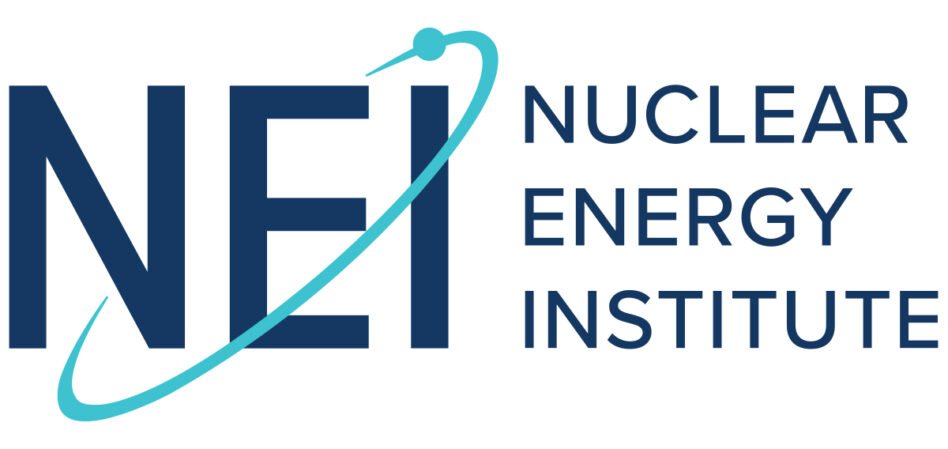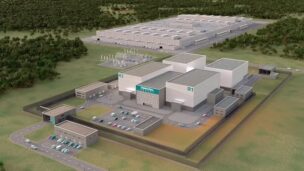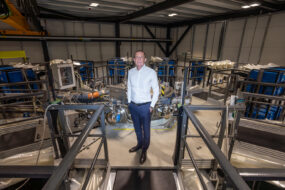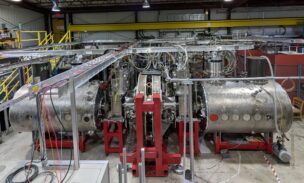Nuclear energy is making a comeback, buoyed by a lineup of new tax credits and private investment.
“It took a wake up call,” Matthew Crozat, executive director for strategy and policy development at the Nuclear Energy Institute, told Ignition.
Crozat’s journey began at the DOE’s Office of Nuclear Energy in 2006, where he expected to advance a wave of new reactor projects. However, after nearly a decade, he found himself at odds with the department’s decision to prematurely close what he described as “perfectly good” nuclear plants. Crozat joined NEI in 2015 to combat this trend, and now, policy and the private sector are beginning to get on board.
In an interview with Ignition, Crozat shed light on how the Inflation Reduction Act signaled the value of carbon-free power from nuclear plants and prompted companies to reassess how they fit their long-term strategies.
Note: This interview has been edited for length and clarity.
Ignition: How has the financing landscape evolved as the US increasingly looks to nuclear as an alternative energy source?
Crozat: Well, it took a wake up call. We did close 13 reactors, many of which because the economic value of the nuclear generation wasn’t being realized. We also saw a number of states step in to prevent more closures. Illinois was one of the leaders there, New York, New Jersey, and they saved the better part of 20 plants.
What we’ve now seen is a federal framework that has created a very clear signal that carbon-free power from nuclear plants is really valuable. We have the new tax credit for the operating fleet that will run through 2032, and that creates something of a revenue floor for plants that are operating in markets that might be home to very cheap natural gas that drives down power prices. We have this financial stability that simply was not there for much of the last 15 years, and that has really changed how companies have thought about how these plants fit into their long-term plans.
I mentioned how important the tax credits have been, but before that, we also saw a federal program called the Civil Nuclear Credit Program. It was a grant program to provide funding for plants that were facing closure. That program directly saved two units in California at the Diablo Canyon Power Plant. I say this because we’ve seen this trend turning on the back of policy.
The other thing I wanted to point out is it’s not just the policy tools that are showing up. We’re also seeing a newfound appreciation for the importance of carbon-free generation that runs all day every day. We’re seeing new commercial interest in paying for that carbon-free attribute on top of power from the private sector in a way that creates a really strong incentive to make these investments to keep the plants in operation, or to expand capacity.
Can you elaborate on the private investment you’re seeing?
We saw one clear example where there was a data center built at the Susquehanna Nuclear Station in northeastern Pennsylvania. Amazon Web Services just bought it earlier this year. They bought the data center itself as well as the power from Susquehanna to run it. That was seen as a transaction that was largely backed by the environmental characteristics of the power that was being purchased there. So we’re seeing this newfound interest. I know PSEG has talked about this as something they’ll look into for their plant in New Jersey.
We are finding that looking at the real expansion of demand for running high-scale computing, they’re looking for around-the-clock, carbon-free power and there’s a ton of that to be found. So, it’s a new opportunity that we just hadn’t seen before in the history of the industry.
And with the rise of AI, that will take a lot of power.
That’s a lot of it. I mean the power-intensive nature of AI is something that’s caught everyone by surprise.
Is there anything else you’d like to note on this topic?
We’re looking not just at renewing the plants as is but trying to expand capacity. We’ve done this for a number of years, and added about 6000 megawatts over the last 20 to 30 years. There’s more potential there and we expect to see another wave of this, also inspired by one of the other tax credits in the IRA which was for all forms of carbon-free generation, whether it’s nuclear, wind [or] solar. We’re trying to get the Department of Treasury to reaffirm that this is going to be available because that will help the economics. This is something that we’re focused on because there’s a real opportunity in the near-term to add a bunch of nuclear capacity, if this credit gets defined in a way that gives companies the certainty to move forward.
I’m often asked whether nuclear is going to have a kind of resurgence because of the IRA. We’re mostly hearing about solar and wind, and I think nuclear has definitely not been discussed as extensively.
It’s interesting because we asked our members a couple years ago what their expectations were for nuclear going forward. What they told us was, essentially, they needed to add about 90 gigawatts of new nuclear while keeping what they had—that’s about doubling the US nuclear fleet—and the IRA is an important part of what’s behind that.
Right now, we’re trying to sort out who’s going to move first and who’s going to create that industrial knowledge base that will allow others to follow. We’re working with our members to understand what’s going to get people moving faster, but everyone sees the long-term need and the tax credits are a really big part of how to think about that problem.




